(Visited 68 times, 1 visits today)

Weighing between 8 and 10 kilograms, males are slightly larger than females, which weigh between 6 and 8 kilograms. Their body hair is grey, the arms are grey to black, and the hands, feet, and legs are black. The face is bluish with large yellow eye rings, very different from those of the Black-shanked and Grey-shanked Doucs. A black band of fur frames the face and extends down the sides of the head and onto the shoulders. The tail is the longest among the Douc species, measuring 66–84 centimeters.
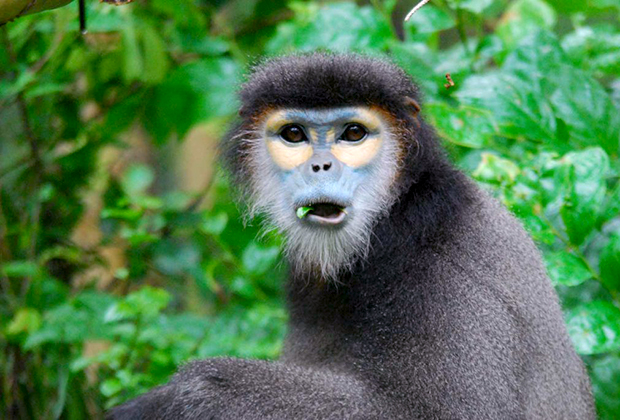
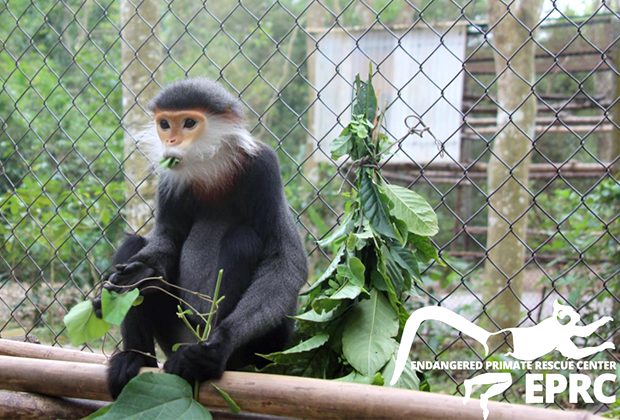
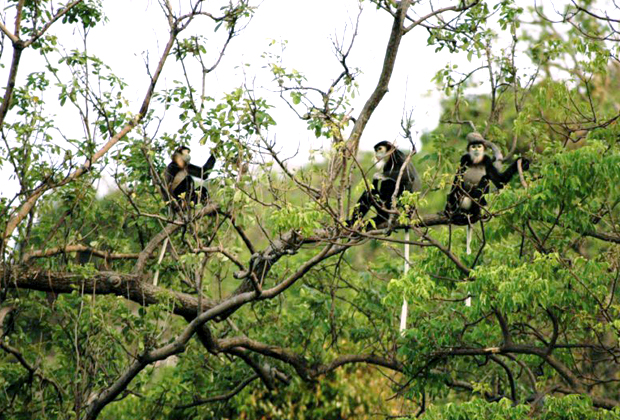
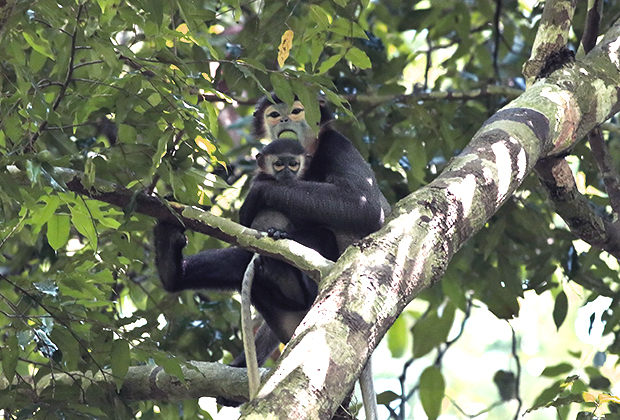
The Black-Shanked Douc Langur is found in southern Vietnam and Eastern Cambodia. In Vietnam, the total population is not known and subpopulations are fragmented.
The primary habitat for this species is a broadleaf evergreen forest; with other known habitats including mixed deciduous, dry deciduous dipterocarp, mixed bamboo forests, and coastal dry forests. They are predominantly folivorous but also consume fruit and flowers depending on the season. The species is arboreal and diurnal and live in single male with multiple female groups. On occasion, these groups come together to form fission-fusion associations of up to 50 individuals.
The main threat to this species is hunting for traditional medicine and subsistence. They are also occasionally hunted for the pet trade.
In Vietnam, the species is listed as Endangered in the 2007 Vietnam Red Data Book and is protected by law under Decree 32/2006 ND-CP: 1B.
This species is threatened with extinction and international trade is permitted only in exceptions circumstances.
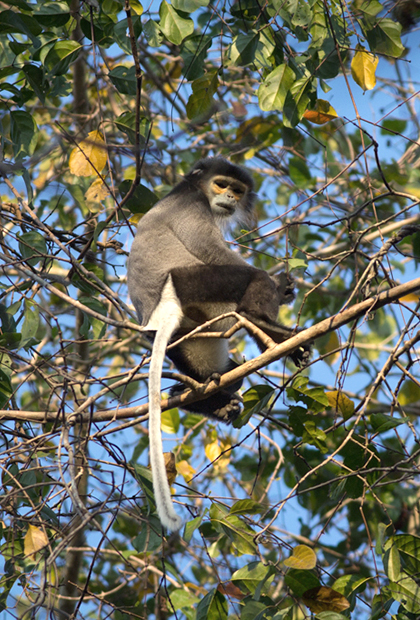

Established in 1993, EPRC is a not for profit project dedicated to the rescue, rehabilitation, breeding, research and conservation of Vietnam’s endangered and critically endangered primate species.
© Endangered Primate Rescue Center 2020
Website by MINIMUMMEANS